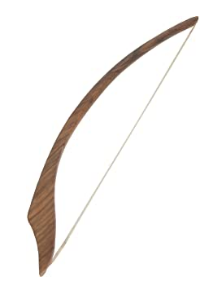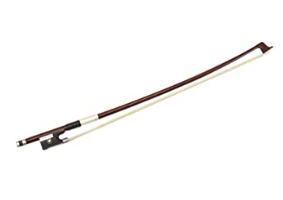Post History
Years ago I acquired a bowed psaltery, with a bow shaped something like this: Every psaltery bow I've seen "in person" has this arched shape. Bows for other instruments (like violins) have a fl...
#1: Initial revision
(How) does bow shape affect playing the bowed psaltery?
Years ago I acquired a bowed psaltery, with a bow shaped something like this:  Every psaltery bow I've seen "in person" has this arched shape. Bows for other instruments (like violins) have a flatter shape, like this:  I need to replace my bow, and I'm seeing both shapes in search results, though more the former. I don't know if this is just bow manufacturers trying to broaden their sales a little, or if there's actually a reason to prefer a flat bow over a curved one. When playing a bowed psaltery you move (disjointly) from string to string, unlike on a violin where you can slide across to the next string. (This is what I've seen, anyway; I don't play violin.) On a psaltery you're playing on a bit of string, between its peg and the next one up, so there's not a lot of room. You (or at least I) play strokes in both directions, depending on context. There are no frets and thus no fingering control (like for vibrato). For the bowed psaltery, what are the practical differences between these two bow shapes, assuming comparable length?


















